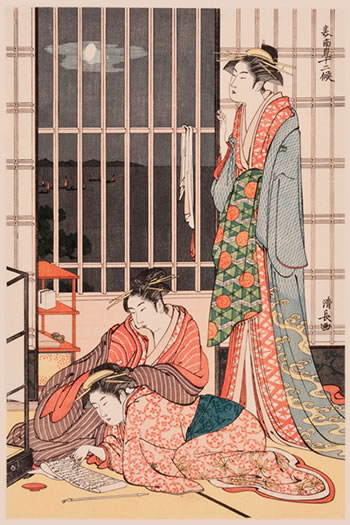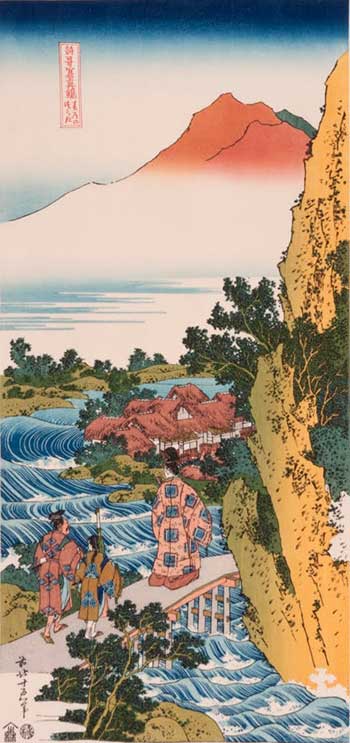Book Reviews - Literature
 A big helping of classical haiku poetry by three acknowledged masters of the genre: Basho, Buson, and Issa. I was never satisfied with the translations I came across, so asked a relative, a lifelong poet himself, for a recommendation—which was this collection. Also includes explanatory essays on haiku and related forms of Japanese poetry along with excellent background material on these three poets.
A big helping of classical haiku poetry by three acknowledged masters of the genre: Basho, Buson, and Issa. I was never satisfied with the translations I came across, so asked a relative, a lifelong poet himself, for a recommendation—which was this collection. Also includes explanatory essays on haiku and related forms of Japanese poetry along with excellent background material on these three poets.
In per-modern Japan, as here years ago, a woman’s place was in the home. She was expected to produce children and obey her mother-in-law. So it’s no surprise that most noted Japanese artists, artisans, writers and poets were male. But not all. In fact, the best known work in the history of Japanese literature was written by an 11th Century woman known to us as Lady Murasaki, who wrote what is often considered the world’s first novel—The Tale of Genji.
According to the translators, Chiyo-ni, who wrote 1700 haiku, was a celebrity in her own time (18th Century). Clearly that celebrity extended beyond her lifetime because two great 19th Century print designers—Kuniyoshi and Yoshitoshi—saw fit to further immortalize her in their art. In Yoshitoshi’s case, Chiyo-ni appears in a print from his great “100 Aspects of the Moon” series.
Here’s a sample of her work:
one mountain after another
unveiled
the first mists
You may know that classical haiku follow a three-line pattern of 5,7,5 syllables respectively. Sometimes that pattern translates well to English, sometimes—as here—not. The book contains a number of fine essays and illustrations of classical scroll and woodblock print illustrations (though unfortunately not in color).
Keene, a well-known Japan scholar, does a good job putting together selections from Japan’s earliest known literature right up to the dawn of modern times—the start of the Meiji era in 1868. According to Keene, this anthology (published in 1955) is the first of its kind in the English language. The great, early 11th Century Tale of Genji is represented by it’s famous “Yugao” chapter. If you want to read the entire Genji, prepare for a tome more than twice as long as this entire anthology.
My recommendation is to read some Japanese history before delving into its literature. That will give you a better understanding and more enjoyment. Either of the two history volumes in these listings should suffice for that purpose. And by all means get a copy of the following, translated by the compiler of this anthology.
Popularly known as the Tale of the 47 Ronin, this is one of the most famous stories in Japanese history and literature—and one well worth knowing because it is so basic to an understanding of Japanese culture. Based on a series of actual events at the beginning of the 18th Century, Chushingura tells the story of a group of samurai who have lost their Master to ritual suicide (“seppuku”). The suicide was ordered as honorable atonement for the master’s purportedly unjustified treatment of a court official. The term “ronin” refers to samurai (also known as “retainers”) who are masterless—which usually means their master (lord, or daimyo) has been killed or disgraced.
In this story the samurai, now left on their own as ronin, plot revenge against that court official. Without going further with the story, it’s impact was to underscore the basic Japanese virtues of loyalty, bravery, and self-sacrifice. You’ll find treatments of this famous historical incident throughout Japanese literature, art, film and drama. The version I am recommending was written for the puppet theater, known as Bunraku. I don’t want to take time to detail bunraku here, other than to say that it is powerful drama which uses large “puppets”—animated by people rather than strings, as in the West. This particular puppet play is one of the most highly regarded treatments of the ronin story.
Here’s an interesting footnote to the drama, which was written in 1748—nearly half a century after the actual event in 1703. Chushingura takes place in 1338—almost four centuries earlier than the event itself. Why? Government policy forbade portrayal of recent events in the arts. (In the long span of Japanese history, a half century qualified as “recent.”) The shoguns wouldn’t brook criticism of their rule, which often was the intent baked into drama or woodblock prints. Nor would they tolerate art which stirred popular passions based on current events like murder or suicide. A pacified populace going about its mundane business was the best assurance against revolution. So dramatists and artists wishing to exploit recent events for commercial gain routinely disguised their characters as long-ago figures of history or legend, and transplanted their plots back in time accordingly.

